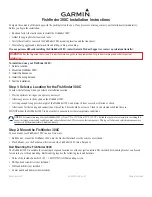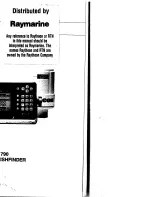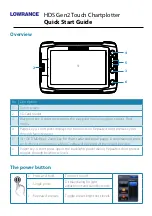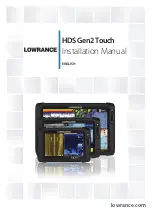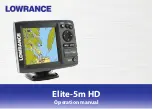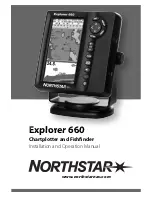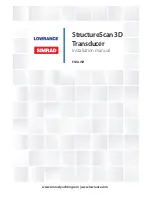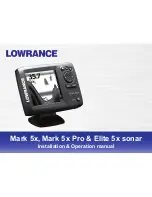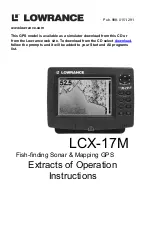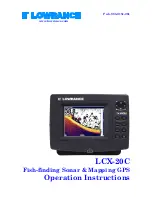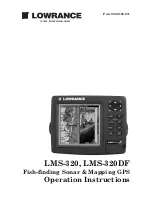
2
Fishfinder 300C Installation Instructions
Use the following table to determine the drill bit size:
Material
Material Thickness (in.) Material Thickness (mm) Hole Size (in.) Hole Size (mm) Hole Size (Drill Number)
Aluminum alloy
sheet metal
from 1/32 to 5/64
from 0.76 to 2.03
.128
3.25
30
from 3/32 to 3/8
from 2.28 to 9.52
.147
3.73
26
Fiberglass - all thicknesses
.140
3.56
28
High Density Plastic - all thicknesses
.125
3.17
1/8
Plywood (resin impregnated)—Professional installation recommended
.144
3.66
27
Drill Size Table
To mount the bracket assembly:
1. Using the base of the bracket as a template, mark the location of the three holes (two screws towards the front, one screw towards the
back).
2. Using the center punch, indent the center of each of the three mounting-hole locations.
3. Drill the mounting holes, using the bit size indicated in the Drill Size Table above.
4. Secure the base with the three included screws.
To install the Fishfinder 300C on the mounting bracket:
1. Align the slot on the back of the Fishfinder 300C with the mounting knob, and slide the fishfinder into place. If
necessary, adjust the knob to spread the bracket arms apart.
2. Adjust the Fishfinder 300C angle and tighten the knob until snug.
Flush Mounting the Fishfinder 300C
In addition to four of the included number 8 ANSI (4.2 × 1.4 DIN7981) mounting screws, flush mounting the Fishfinder
300C requires the following tools:
Phillips-head screwdriver
Drill and drill bit (refer to Drill Size Table above for drill size) for mounting holes
3/8" (10 mm) drill bit for pilot hole
Jigsaw
Scissors
Center punch and hammer
File and sandpaper
Anti-seize lubricant (optional)
NOTE:
Ensure that the surface on which you mount the Fishfinder 300C has sufficient open space behind it to accommodate the Fishfinder 300C and
the connected wires.
To flush mount the Fishfinder 300C:
1. The flush-mount template is included in the product box. Trim the template and ensure it will fit in the location where you want to flush mount
the Fishfinder 300C.
2. The flush-mount template has adhesive on the back. Remove the protective liner and apply the template to the location at which you want to
mount the Fishfinder 300C.
3. Using the center punch, indent the center of each of the four mounting-hole locations.
4. Using a drill bit as specified by the Drill Size Table, drill the four mounting holes.
5. Using a 3/8" (9 mm or 10 mm) drill bit, drill a pilot hole inside the corner of the template to begin cutting the mounting surface.
6. Using the jigsaw, cut the mounting surface along the inside of the solid line indicated on the flush-mount template. Use a file and sandpaper
to refine the size of the hole.
7. Apply the adhesive side of the gasket to the back of the Fishfinder 300C.
•
•
•
•
•
•
•
•

